Last updated on January 25th, 2022
Our site is reader supported, this means we may earn a small commission from Amazon and other affiliates when you buy through links on our site.
Fast growing hedges
Quick growing hedges are typically planted to mark out your property boundary or perhaps you would like to form a fast-growing privacy hedge to stop prying neighbours looking into your garden. Hedges can also help to reduce road traffic noise as well as shelter your garden and property from prevailing winds. Evergreen hedging is usually better for achieving these results and such plants include leylandii conifers and common laurel as they form thick, dense hedges.
If you looking to plant a fast-growing hedge you probably want to do it for one of the following two reasons:
- You want to create a hedge fast in the quickest time possible.
- You want to create a tall hedge, hence fast growing, to achieve the desired height at a faster rate.
Quick Note: It is important to remember that fast growing hedging plants, due to their nature will usually grow tall if they are left unmaintained for any length of time.
Some types of hedging plants will not recover if pruned aggressively when overgrown. One example of this is leylandii. It tends to turn brown when trimmed too much in one pruning session. It is much better to prune once or twice a year to keep it looking healthy, rather than leaving it for two to three years and then attempting to cut it back hard.
As a general rule, deciduous plants (plants that drop their leaves for the winter) will recover better if they have been pruned back hard if you are attempting to rejuvenate a hedge. Evergreen trees tend to be less forgiving when cut back hard.
What to take into consideration when deciding what plants to use to plant a quick growing hedge:
- The eventual height you want to keep the hedge at. Larger growing trees and shrubs such as Leylandii, Laurel or Hawthorn may be better for larger hedges.
- Do you want an evergreen, deciduous, formal or informal hedge.
- Do you want to attract wildlife and birds into the garden, an informal hedge may be what you want in this case.
- Take a look at other gardens to see what grows well around your area.
Types of fast growing hedging plants to form a quick growing hedge
Firstly you may want to consider whether you want to plant a formal hedge or an informal hedge.
An informal hedge is a hedge that is usually made up of several varieties of hedging plants, usually native cultivars. They are usually planted and left un-pruned except for the odd trimming and their natural shape is usually maintained. They are usually better for wildlife as they offer more nesting opportunities for birds and provide a varied source of food, from the different berries they produce. Hedging plants to form fast growing informal hedges include:
- Blackthorn
- Crab Apple
- Acer campestre
- Guelder Rose
- Hawthorn
- Lonicera shrub
- Hazel
- Privet
- Rosa Rugosa (Ideal for seaside position)
A formal hedge is usually planted using one type of plant and trimmed once or twice a year to form a straight neat shape. Plants you can use for formal hedges include:
- Leylandii
- Cherry Laurel
- Thuja Plicata
- Green and variegated privet
- Hawthorn / Quickthorn
Recommended sized plants to buy
Most can be purchased in many sizes from smaller whips (young plants) that can be 30-60cm (1-2ft) tall to larger established specimens at virtually any size. For example 6-7ft Leylandii are readily available from specialist nurseries and can be ordered by mail order for home delivery.
In general, younger plants will establish quicker and although they will need regular watering if slightly neglected they will usually cope better. Large, more established plants will need regular watering for the first couple of years, especially in times of drought and they will not survive if neglected for any length of time. We recommend planting smaller plants if possible but if you need a more established hedge quickly, we recommend using more established plants to achieve this.
The Top 5 plants for creating a fast growing hedge
The 5 plants below are all known for their ability to establish and grow relatively quickly.
1. Leylandii (Cupressus × leylandii) – The evergreen conifers are by far the fastest growing of all the hedging plants available and will easily grow 2-3ft (60-90cm) each year once fully established. They have been the cause of neighbour disputes over the years, however, if kept trimmed they make an excellent evergreen hedge. Regular pruning is essential as pruning back hard after neglect is often not ideal because they will not grow back from older wood. Ideally, space them around 18inches – 2ft apart or up to a metre apart for larger specimens.
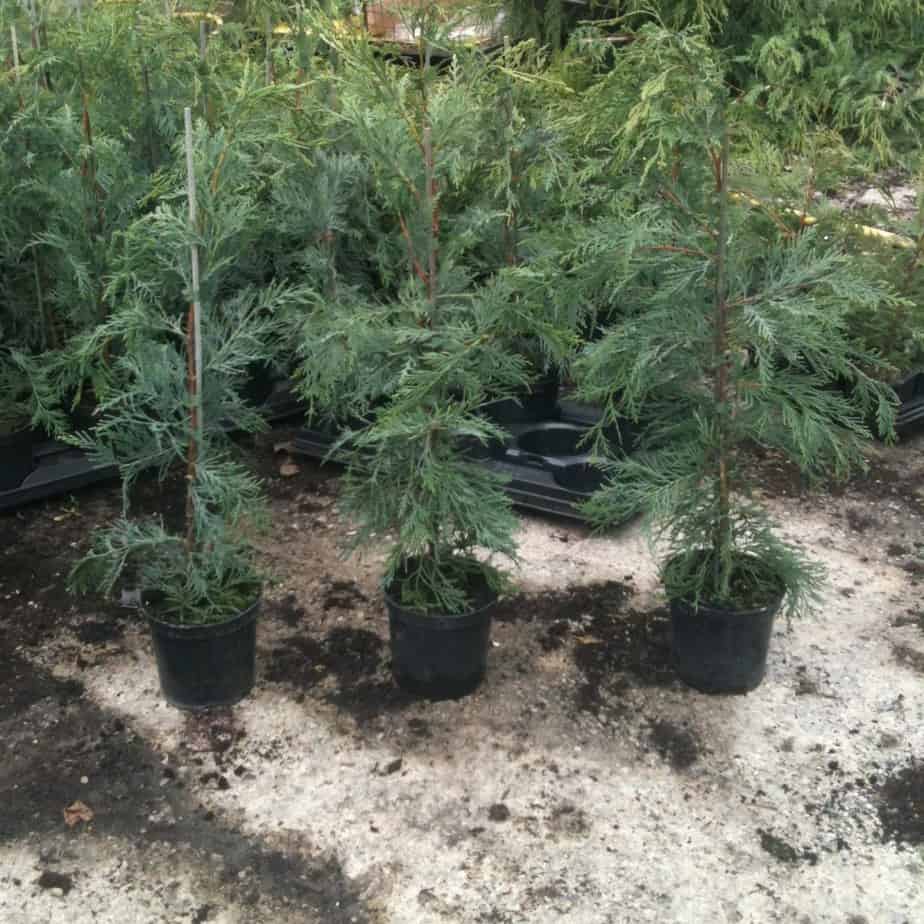
2. Common Laurel (Prunus rounderfolia) – Another excellent evergreen shrub that is ideal for forming dense hedges of any height. It grows quickly and will easily grow approximately 2ft (60cm) a year. Unlike Leylandii it will respond well to hard pruning as it does shoot from old wood. We still recommend pruning twice a year to form a formal hedge. Space approximately 2ft (60cm apart) or slightly more for larger plants.
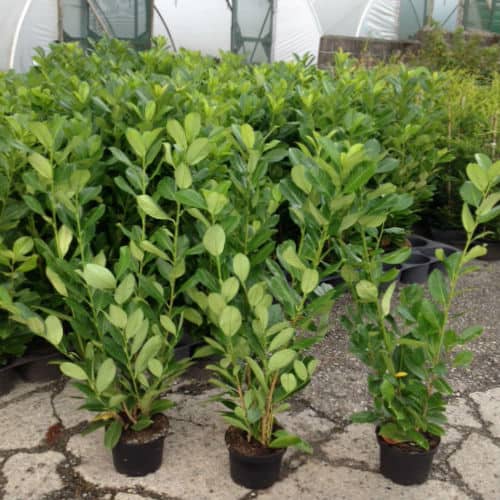
3. Hawthorn (Crataegus monogyna) – Also known as Quickthorn and native to the UK, it is a deciduous shrub that is ideal for hedging and is often seen growing around farmers fields to form boundaries. These spiky shrubs are wildlife-friendly and attract an abundance of birds into the garden because they offer good nesting opportunities and cover. Often purchased as whips that are bare rooted, these are best planted in double rows and zig-zagged to form a dense hedge. Quite often they are tall and thin when planted and it is best to cut them by around half as this will encourage the plants to bush out in spring and form a denser hedge quicker. Hawthorn will make a good hedge of over 10ft (300cm) and will grow into a small tree if left untrimmed.
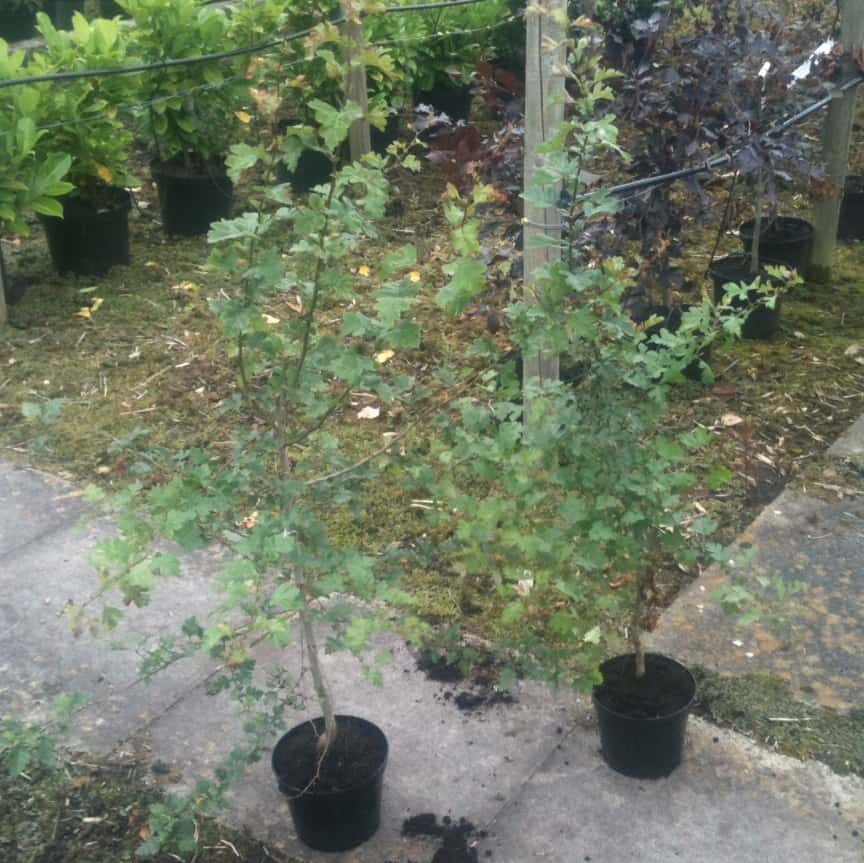
4. Thuja Plicata (western red cedar) – Another conifer that is ideal for forming a fast growing hedge. Similar to Leylandii they will grow around 2-3ft a year and will more often form any desired height that you choose but are less evasive and are a good alternative to Leylandii. They also grow from old wood so do recover better from hard pruning should the hedge be neglected for a few years, although it is not really advised. Plant them approximately 2ft (60cm) apart.
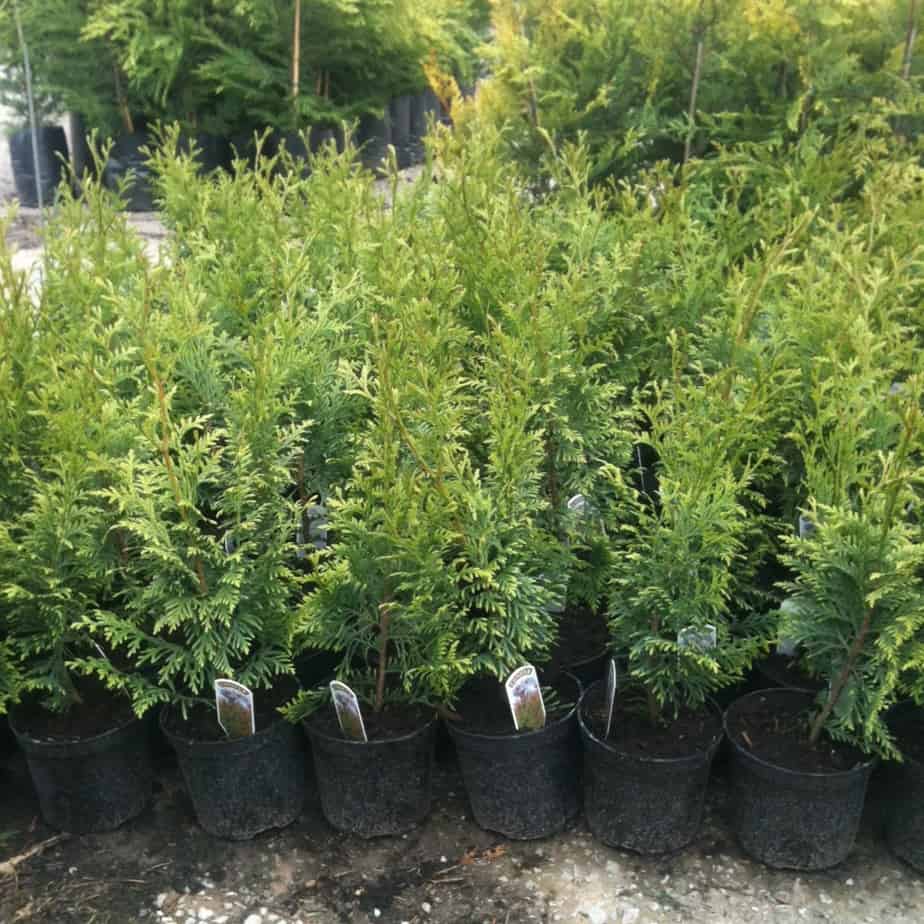
5. Green and Gold Privet (Ligustrum ovalifolium) – Very common on old council estates, this evergreen shrub makes an excellent evergreen hedge although the variegated variety (golden privet) may lose its leaves in harsher environments. Privet responds very well to hard pruning and will always grow back on old wood. Fast growing (around 2ft a year). They will grow in most positions without any problems.
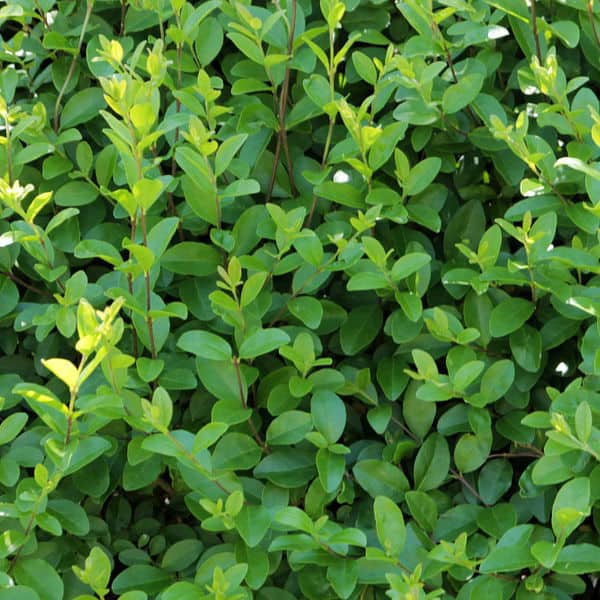
How to make hedging plants grow to their full potential as quickly as possible.
Hedging plants will grow quickly if cared for correctly and given the best start possible. This means feeding or at least improving the soil they are planted in. If you plant them in infertile soil you cannot expect them to grow quickly and achieve their full potential.
Before planting, add plenty of well-rotted farm manure to the soil and mix in well, you can also mix some bone meal into the soil. After planting, water regularly for the first 12 months. Large plants may need more watering for 1-2 years during dryer times of the year. Many plants will not recover if dried out when first planted as they have very restricted root systems.


